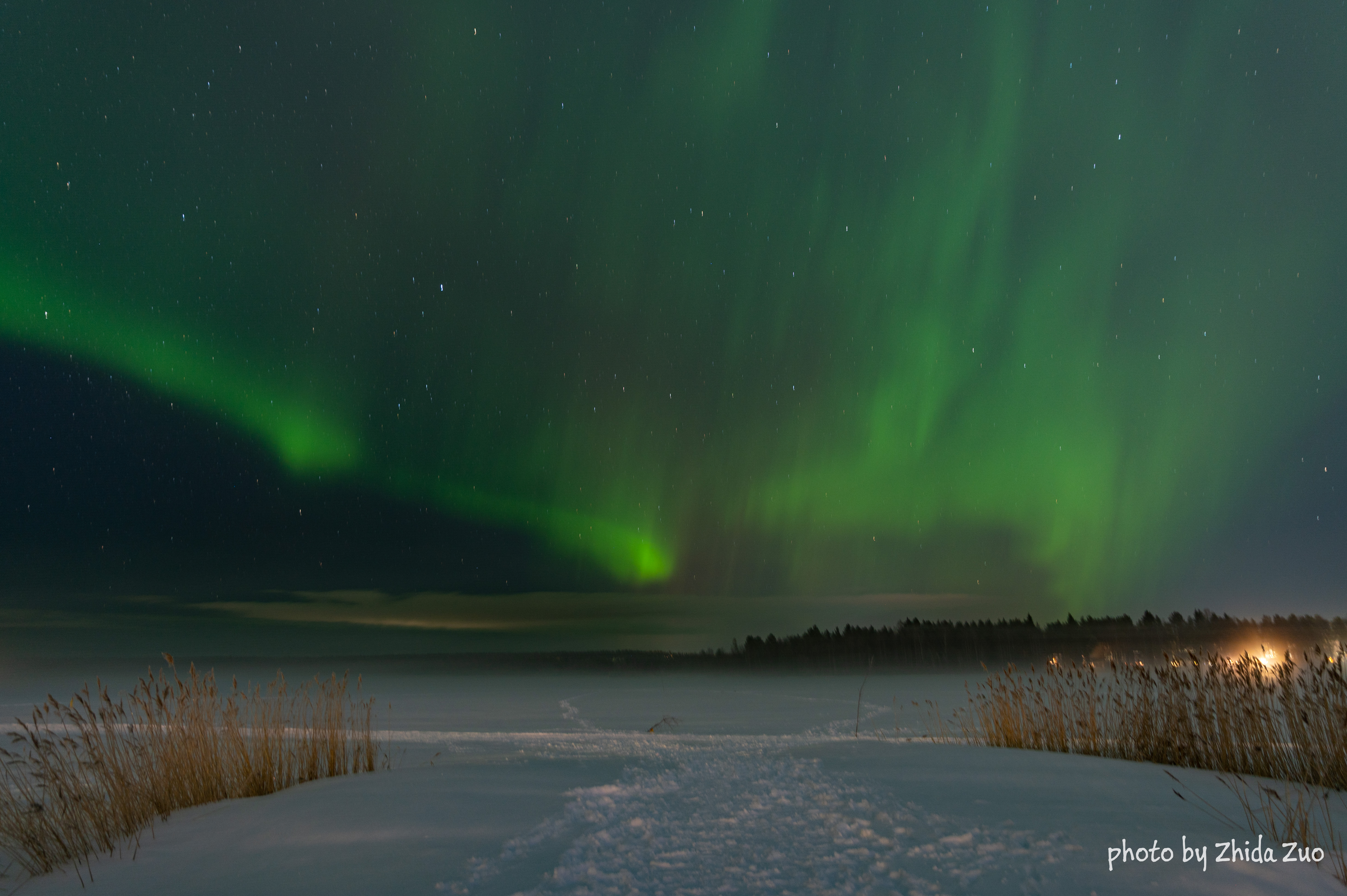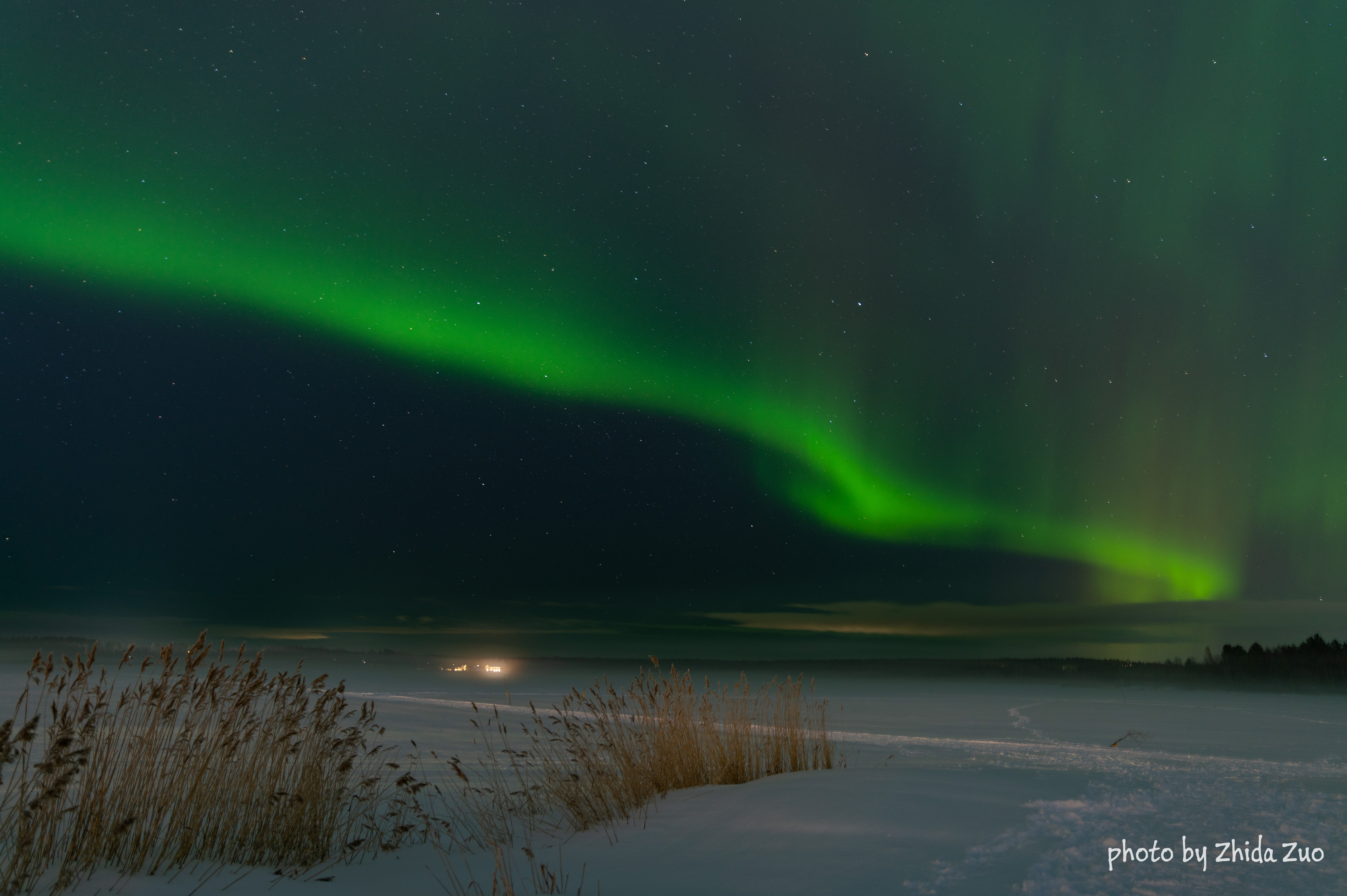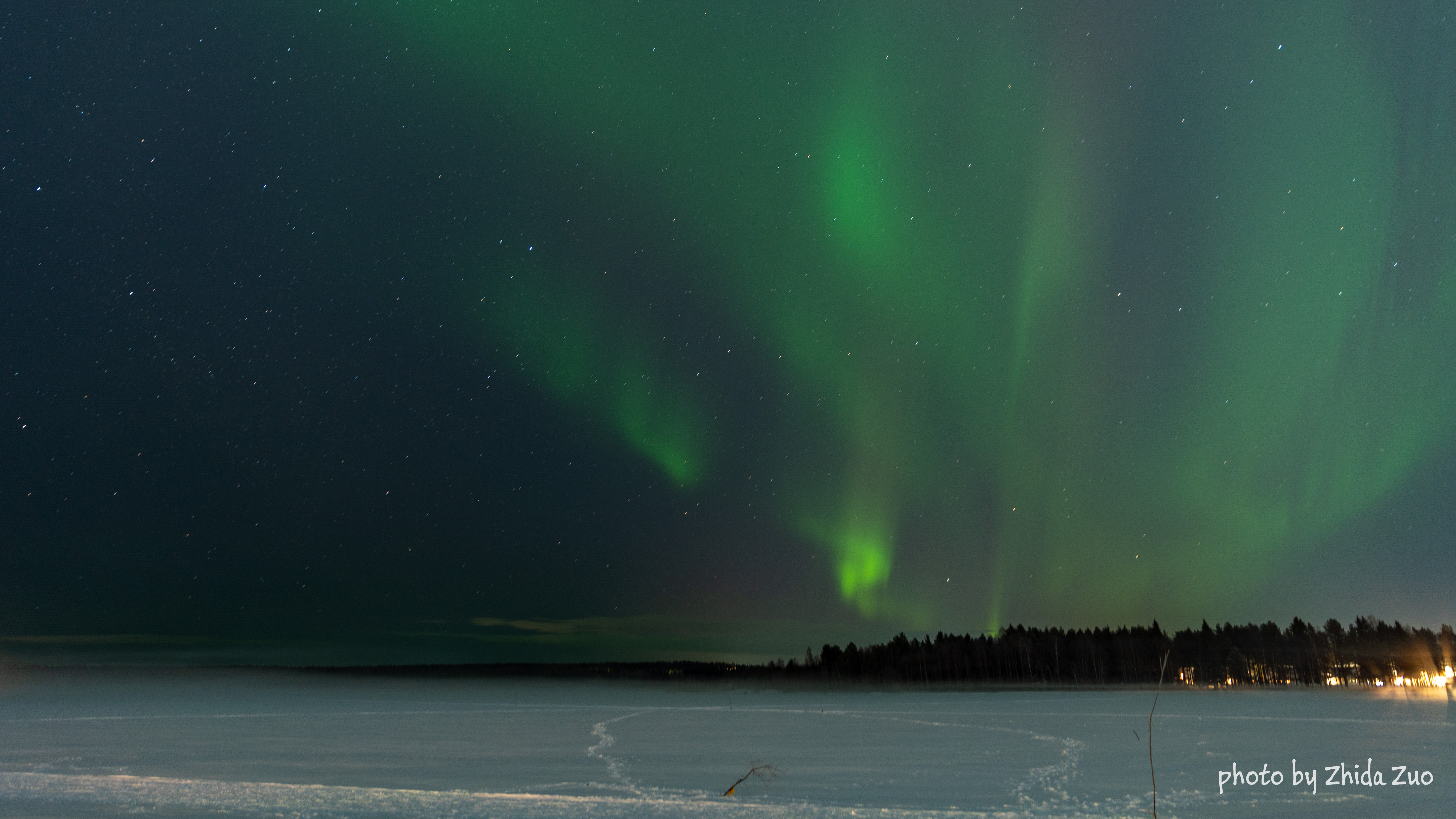At the not-so-young age of 57, I had never seen northern lights before. So it was with some trepidation that, having received an alert from a colleague at around 11PM last Tuesday night, I jumped out of bed, dressed up very warmly and walked half mile east, toward the lake near the University Campus. I had previously studied the whereabouts on Google maps, and had figured out that the lakeside must be the place with the least light pollution at walking distance...
The show was awesome. A geomagnetic disturbance had been forecast to hit Earth late on March 14, and indeed, there it was - green and pink dancing structures in the sky! I tried to take a few pictures with my cellphone, but due to the cold weather and the crappy hardware I was not able to pull off anything worth showing here. Fortunately, the same spot had been chosen by a few chinese PhD students, who later shared their pictures with me. So below you can see more or less what I could see on Tuesday night, courtesy of the author, Zhida Zuo.



Then, on the following night (March 15) the highest activity was observed, corresponding to the arrival of the bulk of matter ejected by the solar flare of March 13. I again walked to the lake at around midnight, but I figure it was a bit too late - I could see a fantastic show for only a few minutes, and then most of the activity faded away. However, the peak of activity occurred over Iceland, and indeed I have seen fantastic pictures in the web, e.g. on the Facebook "northern lights alert" group.
After this experience, I am convinced that aurorae can definitely be one of the most beautiful natural phenomena you may see in the sky. During the strongest geomagnetic storms the sky can lit up with pulsating structures of all colors, from red to blue - although these are rare events, some pink-reddish tones are not uncommon; but blue is indeed rare. The kind of shapes you see in the sky are also awe-inspiring, and they exhibit fast (order one second) as well as slower variations, giving rise to a real show. These shapes have only recently been closely connected to the different phenomena that take part in the upper layers of our atmosphere.
While the mix of observed colours is not difficult to figure out - it depends on the different atoms that emit light when struck by solar wind particles (electrons and ions, that flow to Earth ejected by solar flares, and get to move and dance in the geomagnetic field at altitudes of 100 to several hundred kilometers), understanding precisely how the different shapes of emission regions and their moving patterns are generated is much less straightforward.
The most common structures are called "arcs", or "curtains". They appear as 10-20 degree wide bands in the sky, from east to west, often with a sharper , more defined side and a blurrier one. They are typically green, with a pinkish side hardly detectable in all but the strongest events. They move about slowly, but can occasionally "lit up" within seconds when a stream of electrons reinforces the emission.
Arcs may pulsate and exhibit longitudinal bands that move about and appear and disappear at very fast rate. They may also evolve into spikes - bright vertical columns caused by the precipitation of electrons. Then, sometimes the structures evolve to "coronas", which lit up the whole sky with irregular structures comprising spikes, cloud-looking patches, and other formations.
The physics that describes the dynamics of electrons and ions within the geomagnetic field of the upper atmosphere allows us to understand how these structures are generated and evolve in time, but a forecast of the precise forms that may be visible from the ground is not presently possible. What can be forecast with reasonable accuracy is instead the overall level of auroral activity in different locations around the globe. This is possible by correlating information from Sun observations with measurements on Earth. A good site for short-term forecasts is the Space Weather Prediction Center.
As I learn more about aurorae, I am finding the whole phenomenon increasingly fascinating. While it is true that atomic physics produces macroscopic phenomena all around us (from the light of stars to the smell of different gases, from the behaviour of fluids to the physical properties of matter), some of them are more spectacular than others. Rarity, of course, plays a role. And to see aurorae, you need to travel to northern or southern latitudes, as the typical region of auroral activity spans a band between 65 and 80 degrees of latitude. That is why aurorae are typical items on people's travel "bucket lists".
The strongest geomagnetic storms are rare, and they can be predicted with no more than one day or two of advance; add to that the fact that to see an aurora you must be in a non-light-polluted area, that the full moon interferes with their observation, and that you need a clear sky to see them well (yes, clouds are at much lower altitude!), and you clearly understand why planning for aurora chasing is not easy. But if you are an enthusiast of natural phenomena you are well advised to take your chance one day!





Comments